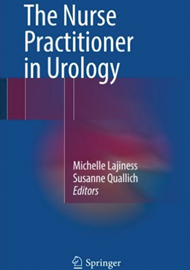This book is designed to meet the needs of nurse practitioners, advanced practice nurses and physician assistants working in urology in the US where Advanced Practice Certification, although not mandatory, is highly sought after by employers and service users alike. It therefore offers a framework for progression of specialist skills based on this level of competence rather than on distinct criteria.
The various chapters of this book have been written by 25 contributors. Though not indexed it is well laid out and easy to read due to the comprehensive contents lists in each chapter making it easy to find relevant topics within the sections. A broad range of conditions is covered, including both benign and malignant (localised) urological conditions.
The main text of the book is categorised into specific conditions, each of which is explored in a consistent way. Most topics include an overview of the condition, incidence, signs and symptoms, risk factors, assessment, diagnostic tests and physical examination, procedures, clinical management and prevention of complications. Some background knowledge is assumed regarding the normal anatomy and physiology for each topic.
Towards the end of the book are chapters on competencies for the nurse practitioner working with adult urology patients which takes the reader through the competencies to be achieved from the level of advanced beginner to proficient and finally expert in the following domains: scientific foundation, leadership, quality, practice enquiry, technology and information literacy, policy, health delivery systems, independent practice and ethics. There is some commonality with the benchmark domains set by the various departments of health within the countries of the UK for advanced nursing practice, but they do not match entirely.
The section on procedures for the nurse practitioner in urology contains some essential information regarding flexible cystoscopy, trans-rectal ultrasound (TRUS) biopsy, luteinising hormone-releasing hormone agonists (LHRH) injection, reduction of paraphimosis, penile ultrasound, injection for Peyronie’s and penile nerve block. This section concentrates on pre and post procedure considerations rather than how to perform the procedure itself.
The book concludes with appendices on prostate specific antigen (PSA) screening recommendations which unfortunately does not include any UK recommendations, and a useful section on first-line interventions for some common urological emergencies.
A useful addition to your hospital library as a benchmark for nurses wishing to develop their urology skills from novice to expert, although as the book and most of its references are US based the UK reader will be required to source additional reference material.





